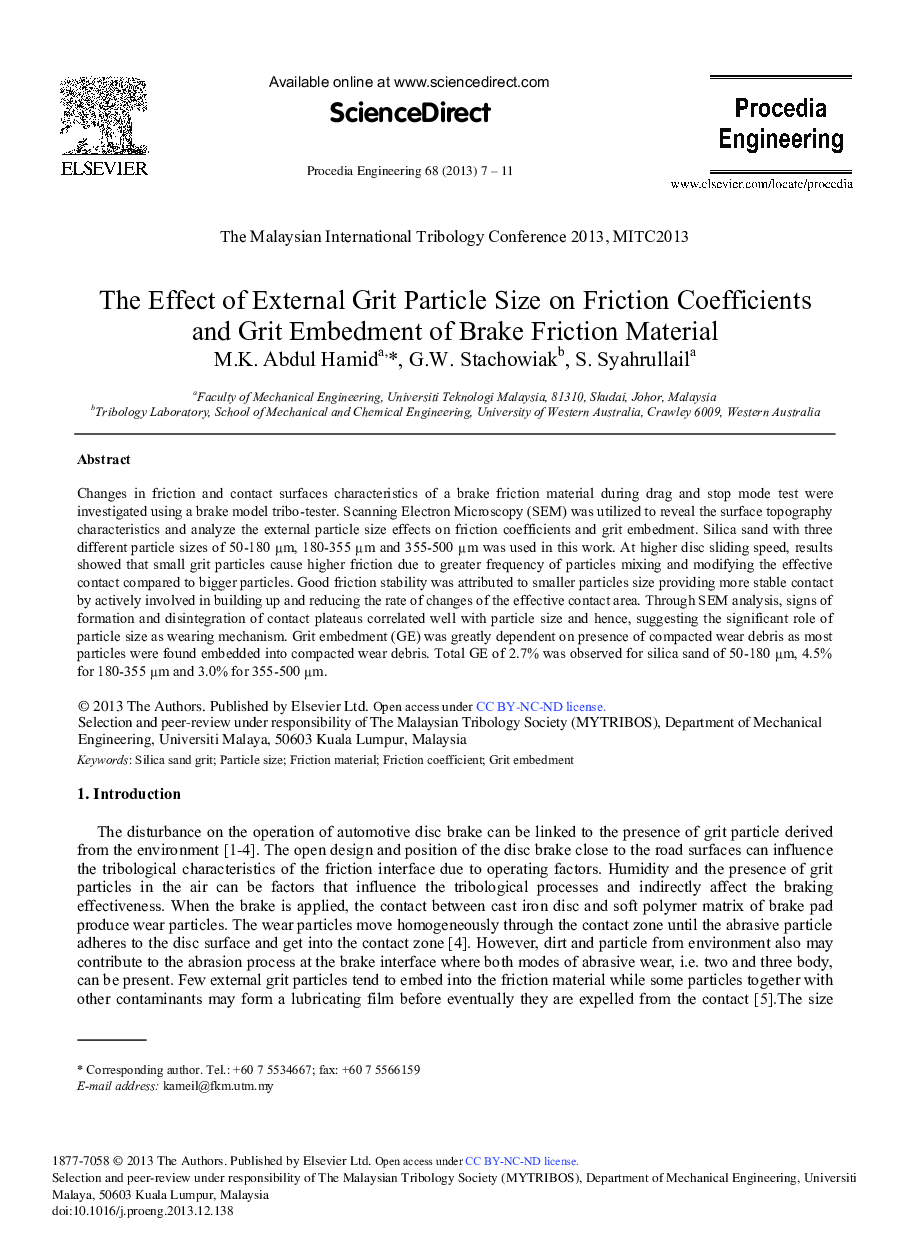| Article ID | Journal | Published Year | Pages | File Type |
|---|---|---|---|---|
| 859597 | Procedia Engineering | 2013 | 5 Pages |
Changes in friction and contact surfaces characteristics of a brake friction material during drag and stop mode test were investigated using a brake model tribo-tester. Scanning Electron Microscopy (SEM) was utilized to reveal the surface topography characteristics and analyze the external particle size effects on friction coefficients and grit embedment. Silica sand with three different particle sizes of 50-180 μm, 180-355 μm and 355-500 μm was used in this work. At higher disc sliding speed, results showed that small grit particles cause higher friction due to greater frequency of particles mixing and modifying the effective contact compared to bigger particles. Good friction stability was attributed to smaller particles size providing more stable contact by actively involved in building up and reducing the rate of changes of the effective contact area. Through SEM analysis, signs of formation and disintegration of contact plateaus correlated well with particle size and hence, suggesting the significant role of particle size as wearing mechanism. Grit embedment (GE) was greatly dependent on presence of compacted wear debris as most particles were found embedded into compacted wear debris. Total GE of 2.7% was observed for silica sand of 50-180 μm, 4.5% for 180-355 μm and 3.0% for 355-500 μm.
